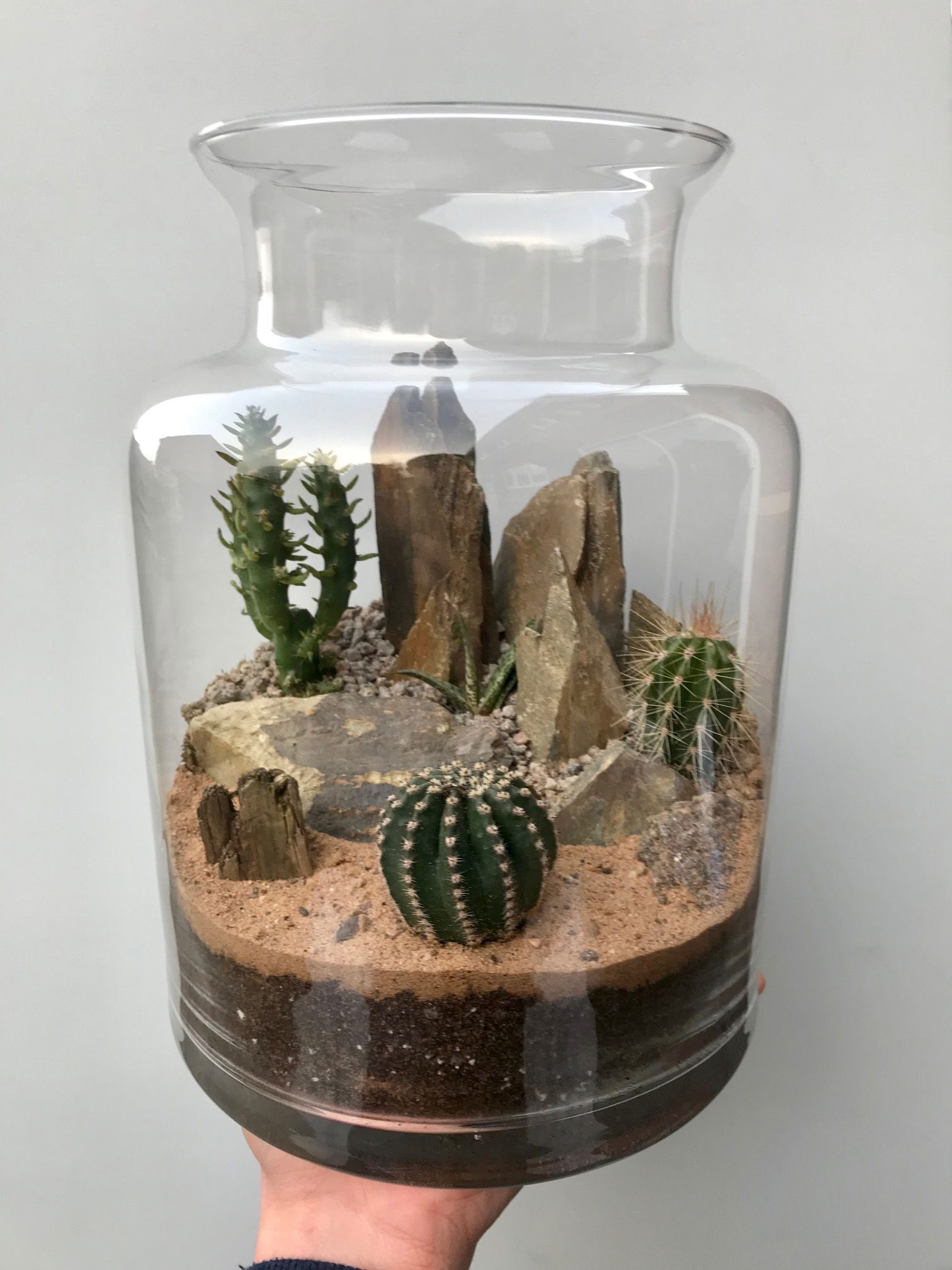Contents
1. Combining the Right Plants
2. Layers
3. Tips on Situating the Plants
4. Ground-Cover & Decorations
5. After Care
1. Combining the Right Plants
Never rush into buying every small plant that you see at a store. Always decide on whether you're going to create a Desert, Tropical or Carnivorous-based display. Combining a desert-dwelling succulent with a moisture-loving specimen will serve nothing but grief for both parties. If you're stuck for a design, fear not - click on the link to see our Terrarium Gallery. The section below will show you which plants are acceptable for each type. If you're interested in making a terrarium for less, click here to have a read on our money-friendly tips of creating an indoor display.
Desert
This type will benefit from an open-top and should never be situated in a poorly ventilated or shallow container. Desert terraria (plural of terrarium) will be the easiest to replicate its biome, and is by far the most fun - see the images below for some of our displays!
- Agaves - Tequila Plants
- Aloe vera
- Crassula - C. dubia, C. hobbit, C. lycopoides, C. ovata, C. 'Tom Thumb', C. sarcocaulis, C.sarmentosa & C. streyi.
- Desert Cacti (NOT Tropical or epiphytic cacti)
- Elephant's Bush - Portulacaria afra
- Euphorbia trigona - African Milk Bush
- Jade Plants - Money Trees
- Lithops - Livingstones
- Pachypodium
- Ponytail Palms - Beaucarnia or Nolina
- Rhipsalis baccifera - Mistletoe Cactus
- Sansevieria - Mother-In-Law's Tongue / Snake Plant, Rocket Plants & African Spears
- String of Pearls, Bananas or Dolphins
- Most Succulents - Aloe, Crassula, Curio, Echeveria, Euphorbia, Gasteria, Haworthia, Portulacaria afra, Sedum, Sempervivum, Senecio, etc.
Tropical / Foliage (Includes Open & Enclosed Types)
You'll have the option of creating an open or an enclosed display. We'd recommend the latter as it presents growing conditions in the likes of high humidity, an abundance of moisture and a better water cycle.
N. B. - Although Spider Plants are a great candidate for a tropical display, they'll quickly out-grow their surroundings within the following months.
- Bromeliads - Tillandsia (Air Plants & Terrestrial Species), Billbergia, Bromelia & Vrisea.
- Crotons
- Ferns - Boston, Dryopteris, Maidenhair (Adiantum) & Rabbit Foot Ferns
- Moonlight Valley Plant - Pilea mollis & P. involucrata
- Parlour Palms - Chamaedorea elegans
- Senecio cephalophorus
- Syngonium
Tropical / Foliage Ground-Cover Plants
- Baby Tears - Soleirolia or Helexine
- Callisia - Turtle Vines
- Fittonia - Nerve Plants
- Maidenhair Vines - Meuhlenbeckia
- Sagina - Irish Moss or Pearlworts
- Sphagnum - Peat Moss
- Tradescantia - Inch Plants or Wondering Jews
Carnivorous
Do NOT incorporate non-carnivorous plants into this type of terrarium (or vice versa), as the poor soil conditions and lack of drying soil will promote an unhealthy specimen.
- Bladderworts - Utricularia
- Butterworts - Pinguicula
- Cephalotus - Australian Pitcher Plants
- Darlingtonia
- Monkey Traps - Nepenthes
- Pitcher Plants - Sarracenia
- Sundews - Drosera
- Venus Fly Traps - Dionaea
Bonsai
Most species of indoor Bonsai will be great candidates for this type of display, and can be put in an open or enclosed glass terrarium! Here are our top six;
- Carmona
- Chinese Elm - Ulmus
- Chinese Pepper - Zanthoxylum
- Ficus microcarpa
- Jade Trees / Money Plants (Use Cactus & Succulent Compost)
- Pachira
Moss
Creating a moss display is the easiest terrarium to develop and maintain. We'd recommend using an enclosed container due to the species' tendency to become dehydrated in open varieties.
- Dicranum - Mood Moss (Mountain-fork, broom-fork, rock camp, etc.)
- Feather Moss
- Horn Calcareous
- Juniper Haircut
- Sphagnum - Peat Moss
If there's a plant-combo that you're unsure of, or an unmentioned species in this section, feel free to send us an email via this link or message ukhouseplants on Instagram for more help!
Need to buy some Terrarium Potting Mix?

Instead of a whole Terrarium Potting Kit, why not purchase just the soil? Our soil mixes are always peat-free, top quality and of great value. Choose between Tropical, Desert or Carnivorous-based composts & enjoy FREE Delivery! Just £4.79
2. Layers
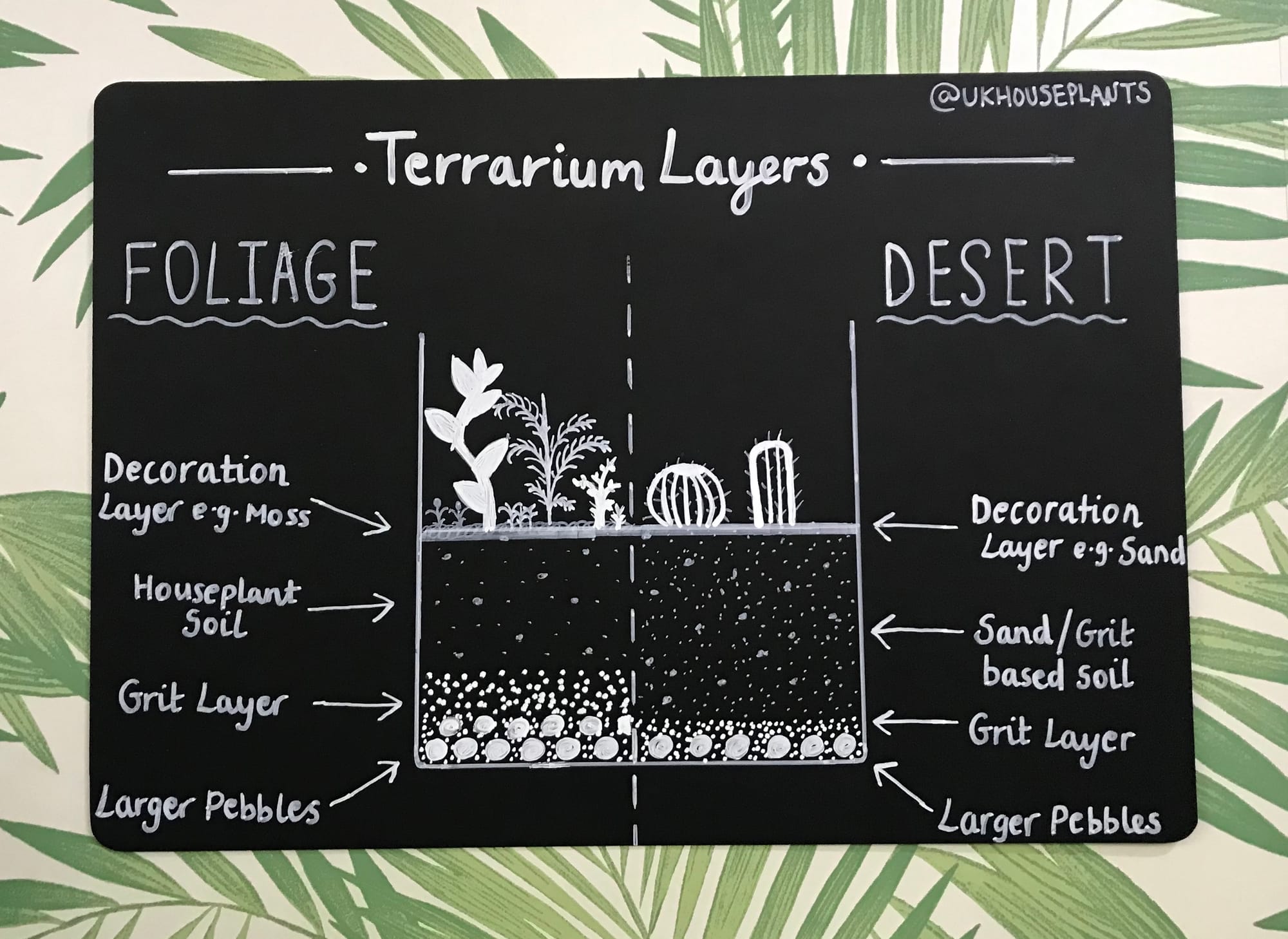 Making a terrarium is like forming the layers of a Lasagna.
Making a terrarium is like forming the layers of a Lasagna.
• 'Base' Layer - Add a layer of stones or pebbles at the base of the terrarium. This must be done before any compost is added, and should fill the display's lower 20% for drainage.
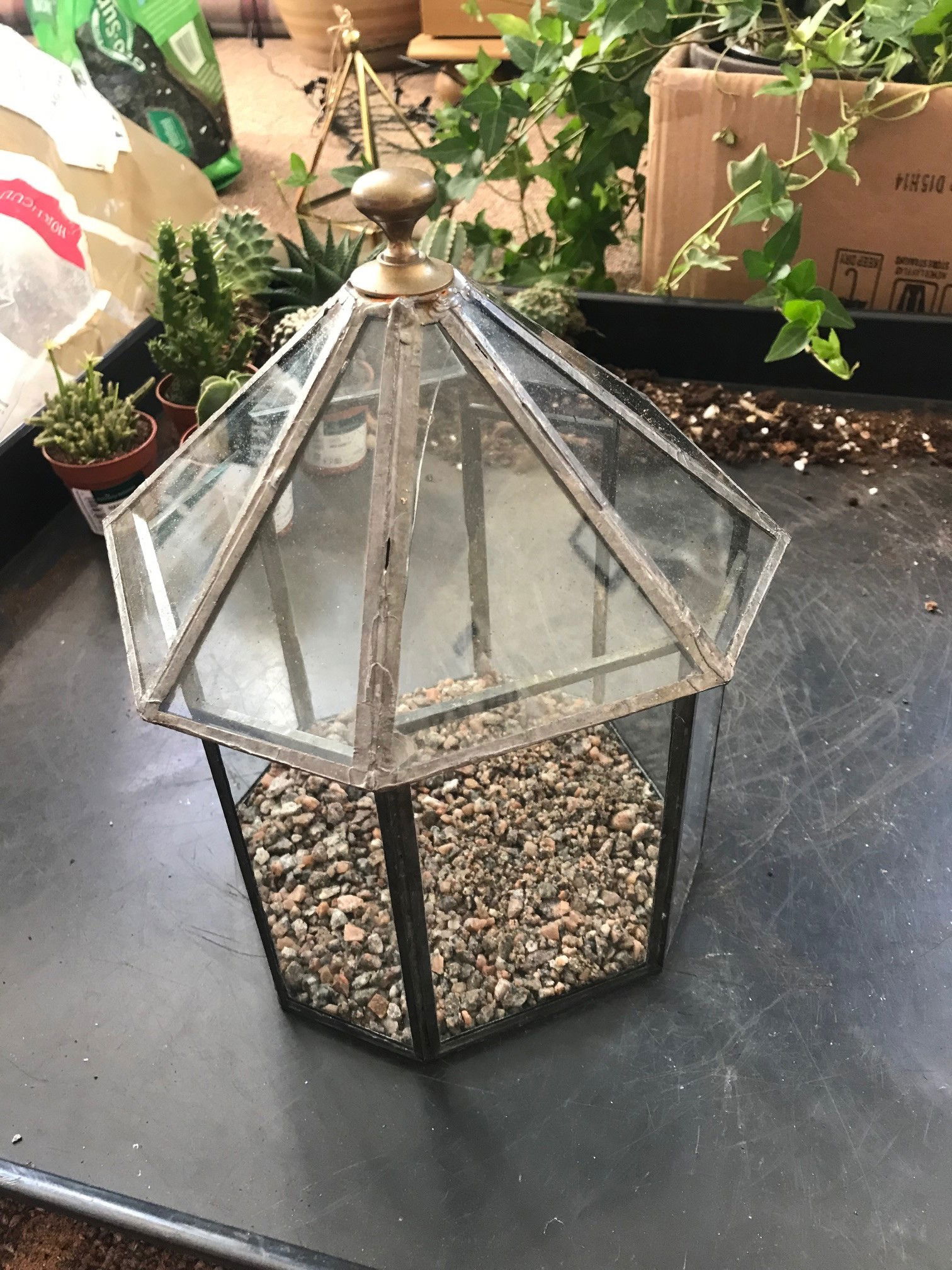 An example of Horticultural Grit.
An example of Horticultural Grit.
Most stone forms are acceptable - ukhouseplants recommends using Horticultural Grit (pictured) along with a few pebbles found outside. Prevent the spread of disease by always washing stones that are brought in from your garden. This section will provide a safe-zone where excess moisture will be collected to reduce the severity of water logging and root rot. Even if the terrarium includes drainage holes, be sure to incorporate a layer of grit to help the growing conditions.
• Soil Regulator - A thin layer of Activated Charcoal will work wonders in all soil types. The carbon will regulate bacteria and fungus located in the potting-mix, significantly reducing the chance of diseases.
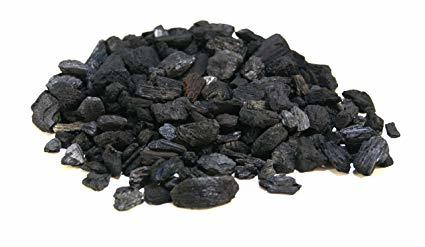 Activated Charcoal
Activated Charcoal
Not only this, but it'll also reduce the 'earthy' smell that can be emitted from the compost. Even though this step is recommended and NOT essential, purchasing Activated Charcoal from an online store will significantly improve the overall growing conditions below its soil line.
• Compost - This section is widely up to discussion. Some books and websites will recommend a Houseplant potting mix, whereas others lean towards the 'Make It Yourself' option. ukhouseplants have made countless terraria over the years, and we'd say that it solely relies on the type of display. The table below includes our recommended potting-mixes that are currently on the market in the UK; even if you're located in another country, there'll always be similar substitutes to choose from.
| Terrarium Type | Recommended Compost |
| Desert (Cactus & Succulent) | 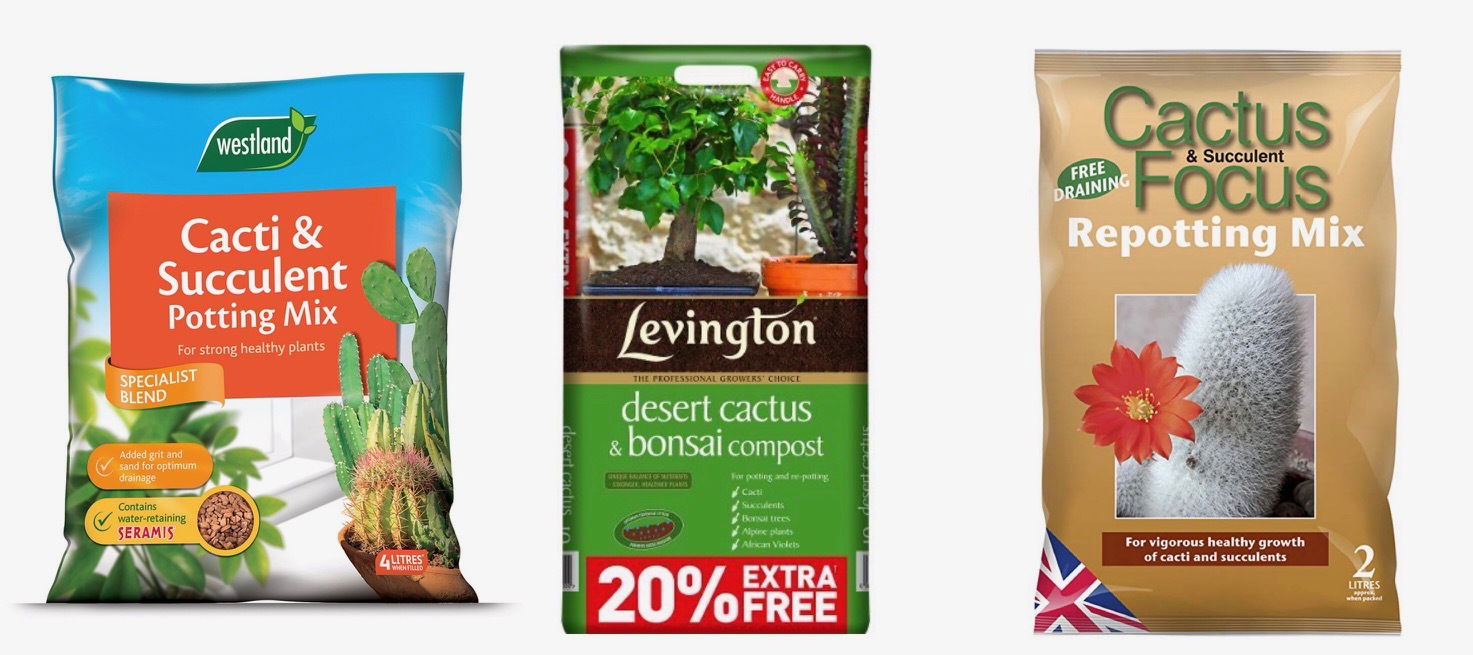 Use a well-draining potting with a generous mixture of grit, sand & perlite. We'd recommend using a 'Cactus & Succulent Compost' as it's widely available at most garden centres and is relatively cheap. Use a well-draining potting with a generous mixture of grit, sand & perlite. We'd recommend using a 'Cactus & Succulent Compost' as it's widely available at most garden centres and is relatively cheap. |
| Tropical or Foliage |  'Houseplant' potting mixes are best, however, 2 parts multipurpose compost and 1 part perlite is fine, too. 'Houseplant' potting mixes are best, however, 2 parts multipurpose compost and 1 part perlite is fine, too. |
| Carnivorous | 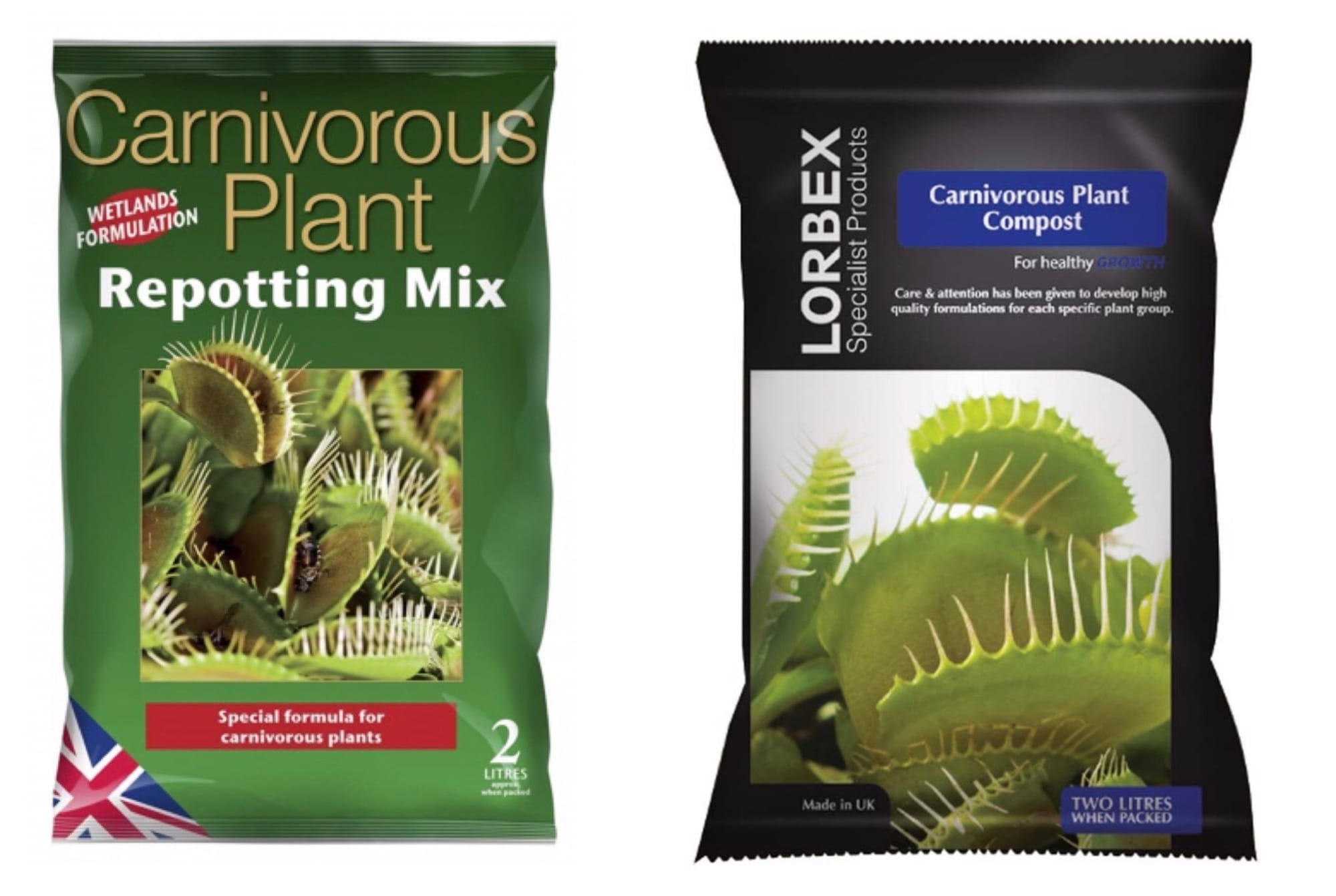 Carnivorous-labelled potting mixes must be used due to the lack of nutrients; using any other soil will burn the roots followed by plant death after a few days. Carnivorous-labelled potting mixes must be used due to the lack of nutrients; using any other soil will burn the roots followed by plant death after a few days. |
| Bonsai | 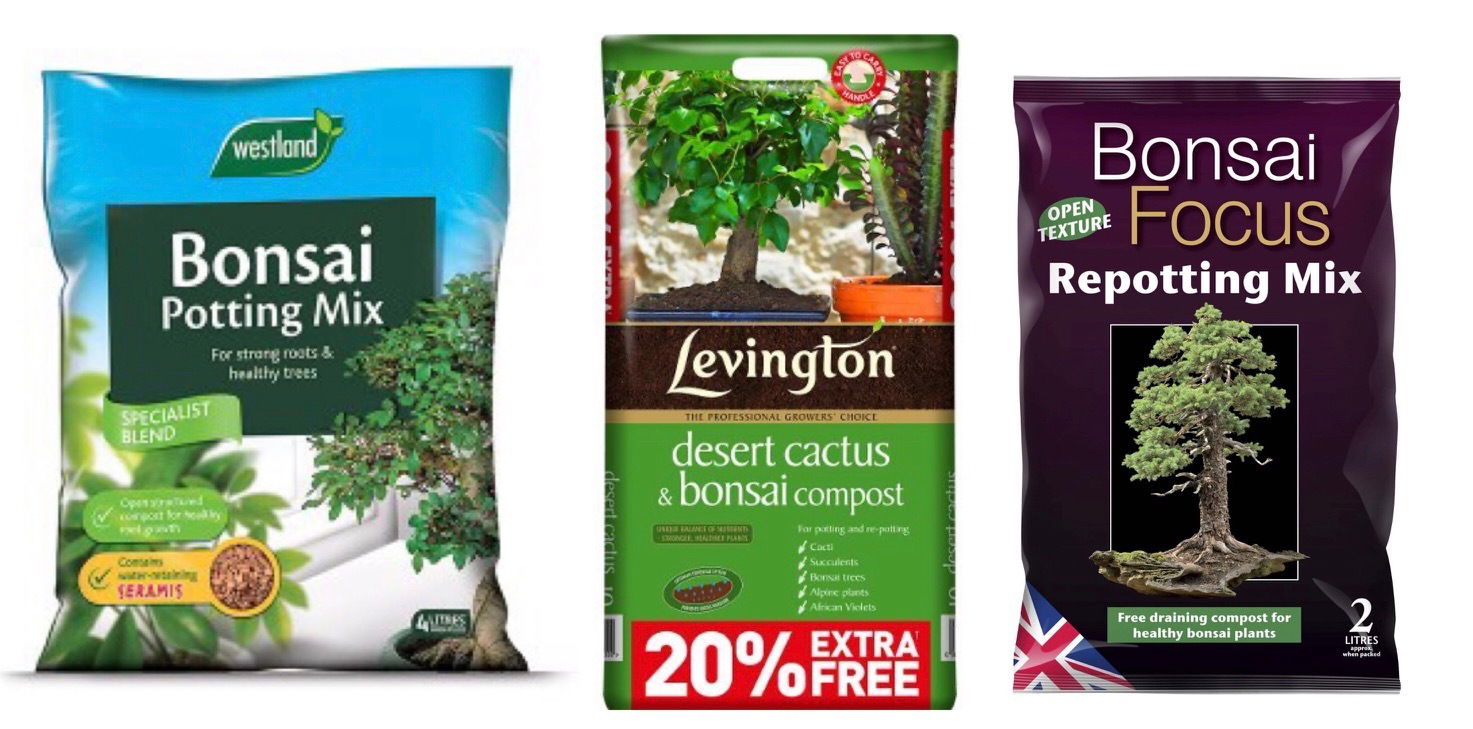 For Bonsai displays, you have the option to use a specific compost (pictured above) or a 'Houseplant Compost' - the choice is entirely up to you! Please note that Jade Trees (Money Plants) will require a Cactus & Succulent potting-mix. For Bonsai displays, you have the option to use a specific compost (pictured above) or a 'Houseplant Compost' - the choice is entirely up to you! Please note that Jade Trees (Money Plants) will require a Cactus & Succulent potting-mix. |
| Moss | As most species will lack a detailed root system, incorporate just an inch and a half (3cm) of Houseplant Compost above a layer of stones and Sphagnum moss (or Spanish moss). The layer of grit will be at the bottom, followed by some moss and then the thin layer of soil. |
2.5 Taking a 'Slice' Out of the Desert
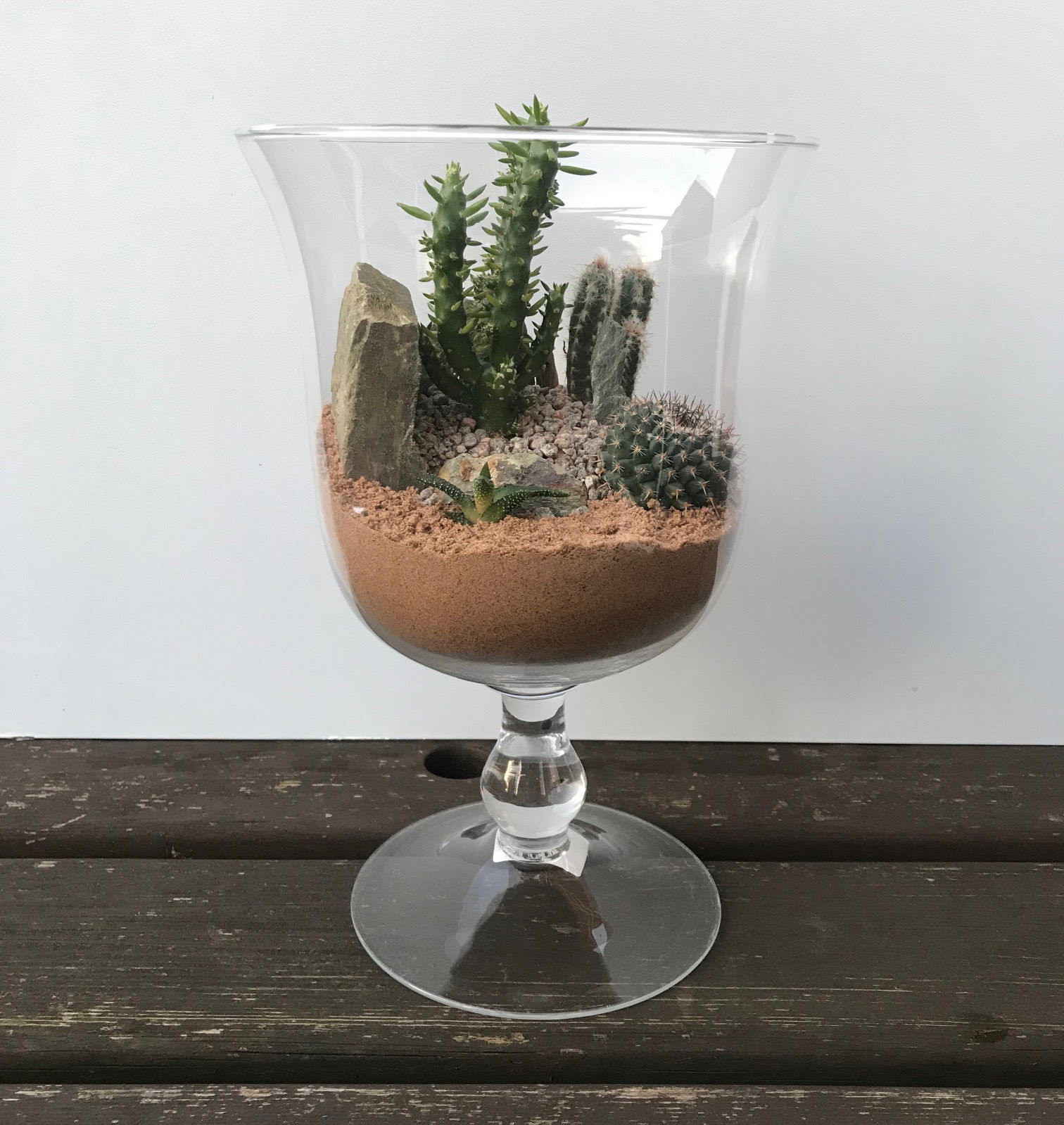
Instead of just adding sand on the terrarium's soil line, why not incorporate it AGAINST the glass, too? As you can see by the image below, we pressed moist sand into the inside of the terrarium to give it an infinite 'deserty feel'.
- Which sand? We'd recommend using Horticultural Sand as this sticks to the glass and will look the good when dried. Do not use 'Play Sand or a builders' sand as both will contain harmful chemicals for the plants.
- Moisten it - Just like making a sandcastle at the beach, pre-saturate it to improve the contact and stickiness.
- Press against the glass using a 2cm (0.8 inches) layer of sand. Incorporate this around the whole glass, except for the drainage layer (where the stones or pebbles will lay).
- Set the soil inside the gap, making sure you don't knock the sand off in the process. Once the plants are safely placed into the terrarium, cover the soil's top layer with sand to create the infinite 'desert'.
3. Tips on Situating the Plants
Stuck on a design? Click here to see what ukhouseplants have made over the years! Terrarium Gallery
• Dig a small trench into the soil to accommodate its rootball and fill or spread the compost into the remaining gaps. It's important not to 'pat' or condense the potting-mix as this will strip the oxygen when watered. A soil that lacks air will result in rot.
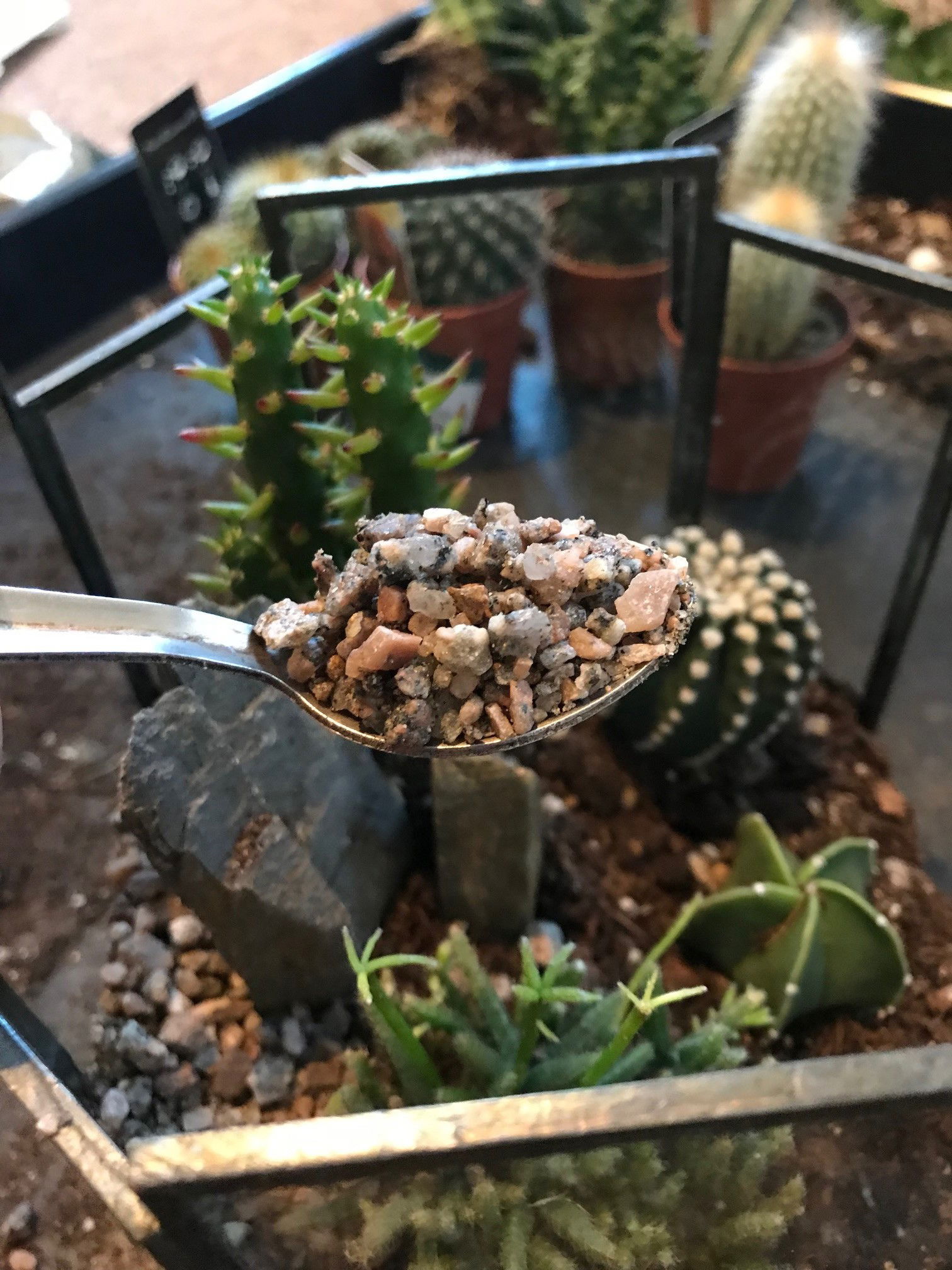 Teaspoons are a great utensil for shifting sand, soil and stones into their desired location!
Teaspoons are a great utensil for shifting sand, soil and stones into their desired location!
• For Cacti, be sure to wear protective gloves or wrap its foliage around with paper to carry. Use a chopstick to spread the soil around its base for support. With rosette-shaped Succulents, such as Aloe, Sempervivums & Haworthia, keep its foliage ABOVE the soil line prevent the development of diseases like Powdery Mildew or Grey Mould.
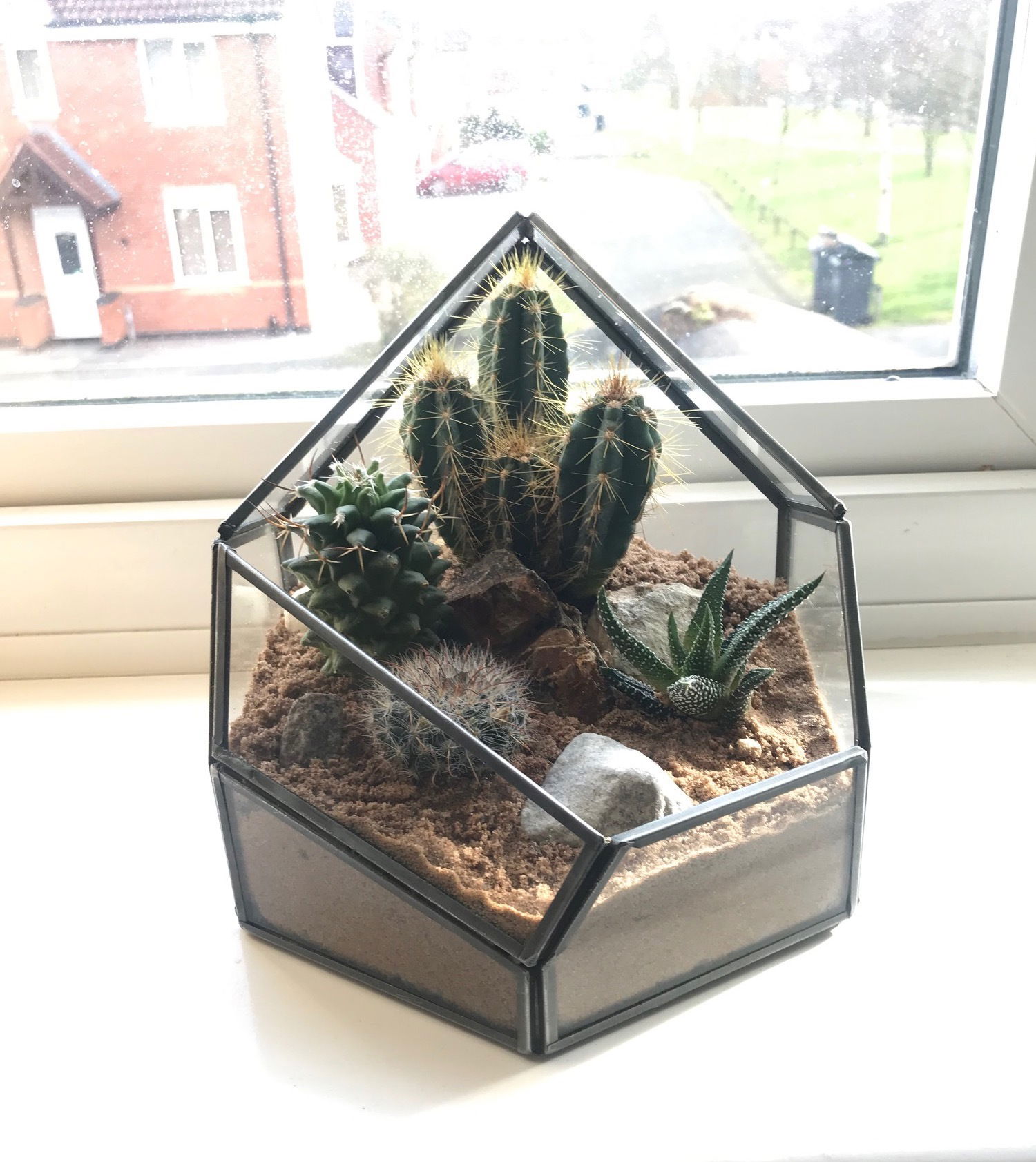
• Have a look at the image above - to get the most out of your terrarium, it's best to keep the small specimens at the front, and the tall at the back. It'll create a cascading effect where people will be able to focus on different sections of the display without difficulty.
• Incorporate several 'platforms' at different heights by creating a mountainous scene that has vertical stones towards the back of the display. Fill the gaps with compost and be sure to have the soil line higher around the rocks than below (in front). Have a look at the image below for visual comprehension.
4. Ground Coverage & Decorations
This step should be personalised to your taste. Some like to add coloured pebbles and figurines and others add a thin layer of sand to create a tundra appearance. Whichever you choose, never be afraid to spend some thought into the design - here are some of our ideas;
Desert - Cover the soil line with sand and follow the 'infinite desert' idea (Section 2.5). Add some dried bark & flat stones to replicate this climate.
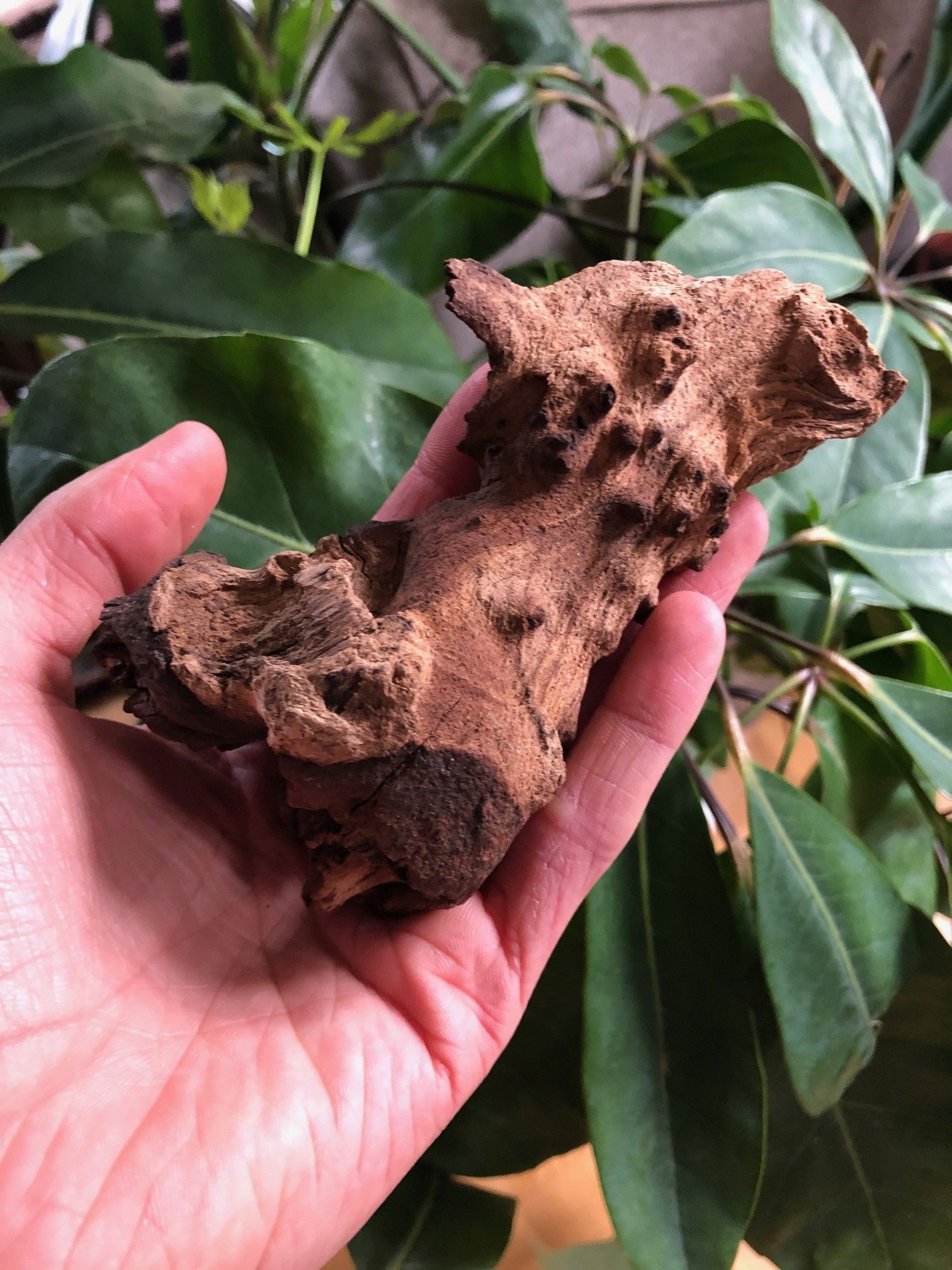 ukhouseplants' recommended bark is Sandblasted Rosewood, which is available at most Aquatic stores.
ukhouseplants' recommended bark is Sandblasted Rosewood, which is available at most Aquatic stores.
Tropical - Add Sphagnum Moss, ground-covering plants (Section 1) to create a jungle or tropical display. Introduce some slate-coloured stones for texture enhancement.
Carnivorous - Sphagnum Moss is a great idea to prevent droughts and to mimic the bog-like conditions that insect-eating species originate from. Be sure to wash any stones or moss before use to avoid burning their roots. Purchase Dryopteris spores online to add a contrast of foliage.
Bonsai - Incorporate vertical slates or stones to create a mountainous theme. Cover the soil line with small stones (we use Horticultural Grit, pictured above) and some Sphagnum Moss for grass.
Moss - Include some smooth pebbles or stones to complement the shape of its foliage.
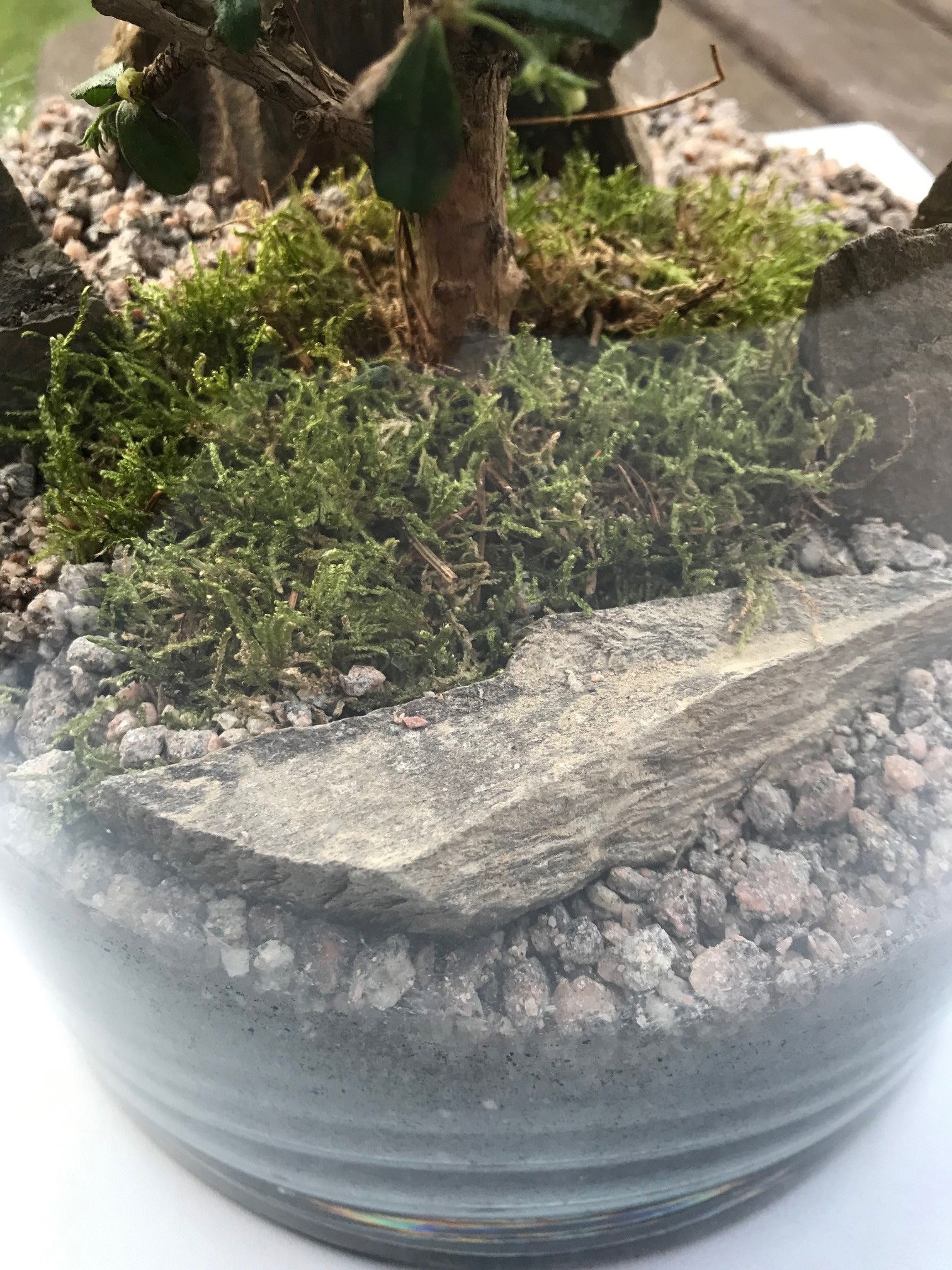 Sphagnum Moss works well as decorative grass. Plant: Carmona retusa
Sphagnum Moss works well as decorative grass. Plant: Carmona retusa
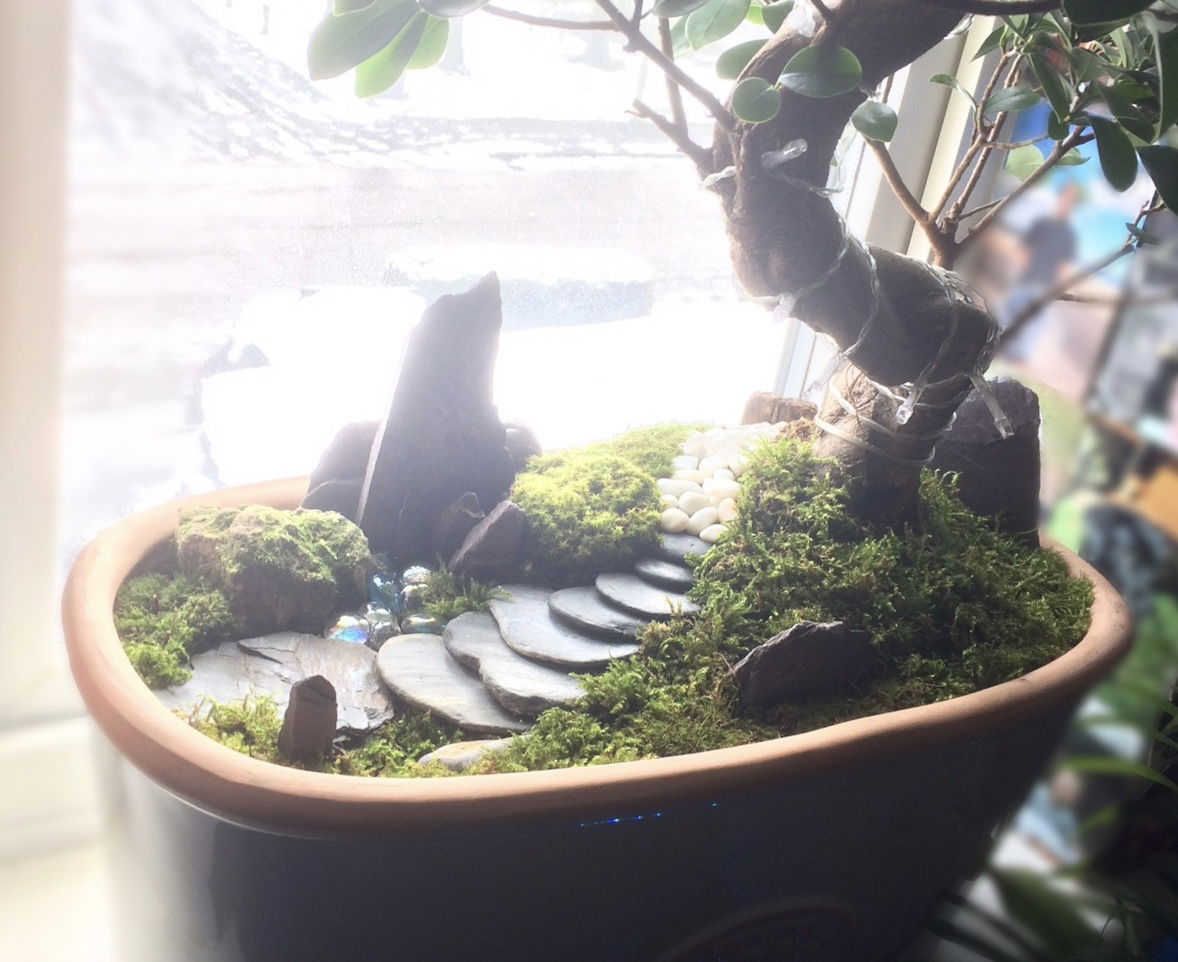 Place thin slates at an angle to mimic a stoned-staircase! Plant: Ficus retusa
Place thin slates at an angle to mimic a stoned-staircase! Plant: Ficus retusa
5. After-Care
Click on this link to find out how to care for & locate your new terrarium!
Alternatively, if you're interested in finding ways to cut the cost of terrarium making, click on this link.
Looking for inspiration? Click here - Terrarium Gallery
Book a 1-to-1 Consultation with THE HOUSEPLANT DOCTOR™
Need realtime advice for creating or maintaining your terrarium? Book a video or message consultation with expert Joe Bagley, THE HOUSEPLANT DOCTOR™ (author or ukhouseplants.com). Choose between a ten or thirty-minute session & a platform of your choice (WhatsApp, FaceTime, Facebook Messenger or Zoom). Ask unlimited questions in one session, including queries on your dying/challenging plants, pests eradication, terrariums, repotting advice & everything in between! Available worldwide.
